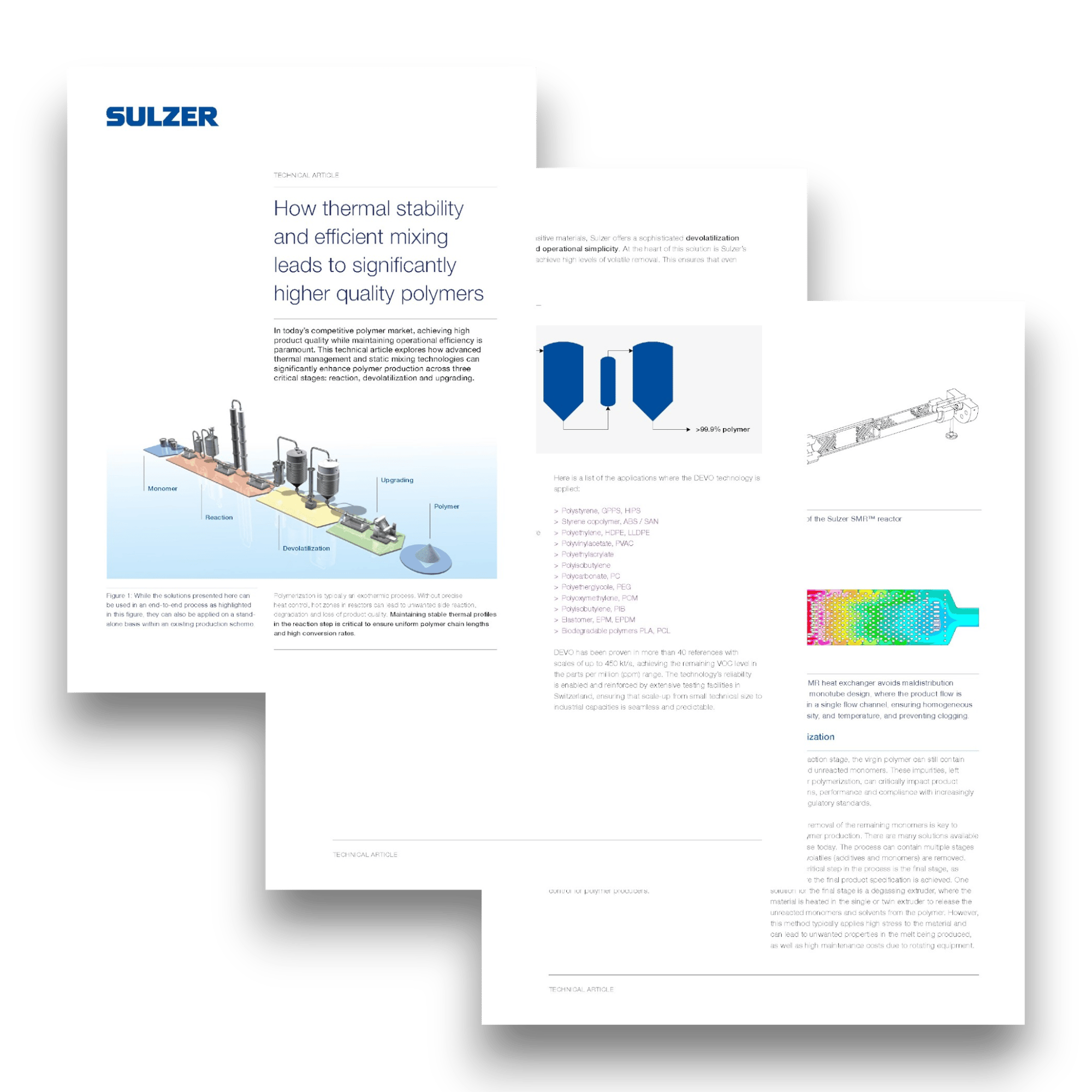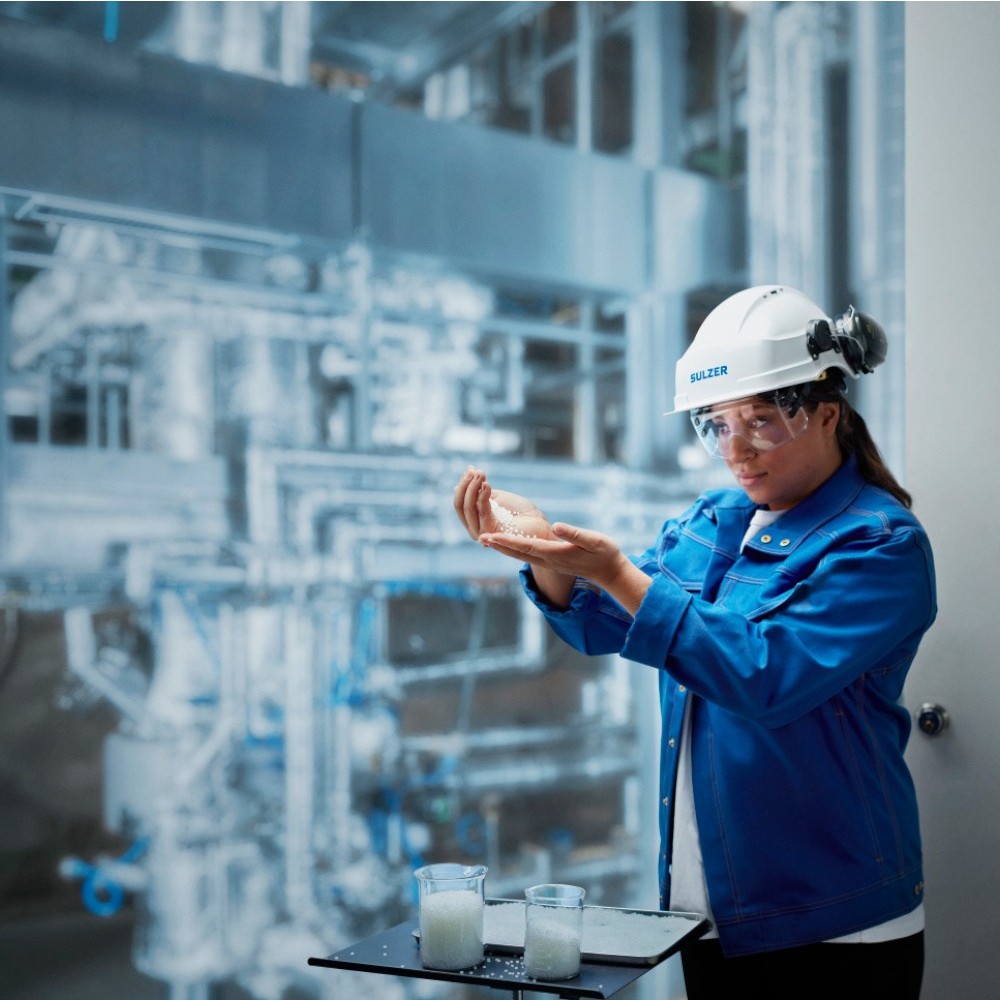
How thermal stability and efficient mixing boosts polymer quality
Download our technical article to discover how static technologies improve the quality and reduce the degradation of polymers through the different stages of production.
Consistent quality
at lower OPEX
Improve stability, conversion and homogeneity while reducing energy use and equipment costs in high-viscosity or shear-sensitive applications.
Superior thermal and shear control
Achieve precise heat removal and low shear, which is critical for sensitive polymers, elastomers and biopolymers.
Lower maintenance and higher uptime
No moving parts. No costly downtime. No wear and tear. Just static solutions that simplify operations and extend equipment life
Download the article to discover how top producers are improving quality, efficiency and control at every stage of polymer production by:
- Stabilizing thermal profiles to prevent polymer degradation.
- Using static heat exchangers that outperform traditional systems in energy efficiency.
- Avoiding shear damage during devolatilization of sensitive polymers.
- Knowing when to replace extruders with low-maintenance static systems.
- Achieving homogenous mixing of additives with extreme viscosity differences.
- Reducing equipment footprint and OPEX by up to 80%.

Sulzer can help you optimize your most critical polymer processes, enhance performance and boost efficiency.
Sulzer is a trusted partner for polymer producers worldwide, offering advanced technologies that improve heat management, enable gentle mixing and streamline operations without compromising product quality. With decades of experience and over 40 production lines in operation, our scalable solutions support both traditional polymers and bioplastics, helping manufacturers reduce energy consumption, maintenance needs and operational risks from lab scale to full industrial implementation.
Proven across industries and polymer types
Our technologies are applied across a wide range of polymer applications.
Main applications:
- Polystyrene, GPPS, HIPS.
- Styrene copolymer, ABS / SAN.
- Polyethylene, HDPE, LLDPE.
- Elastomer, EPM, EPDM.
Key performance benefits:
- High and controllable heat transfer rates.
- High conversion and reduction of by-products.
- No dead zones.
- No rotating parts.
